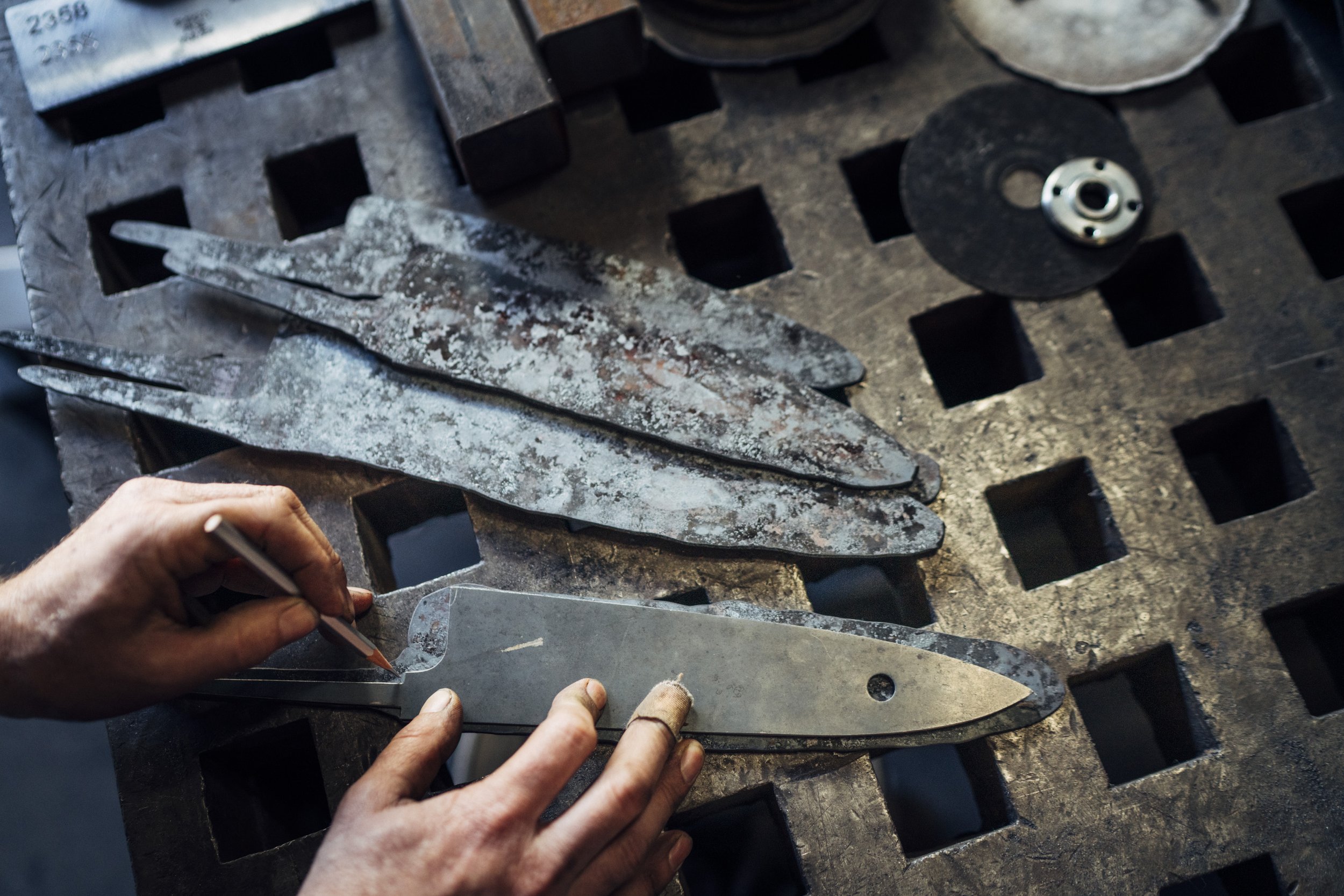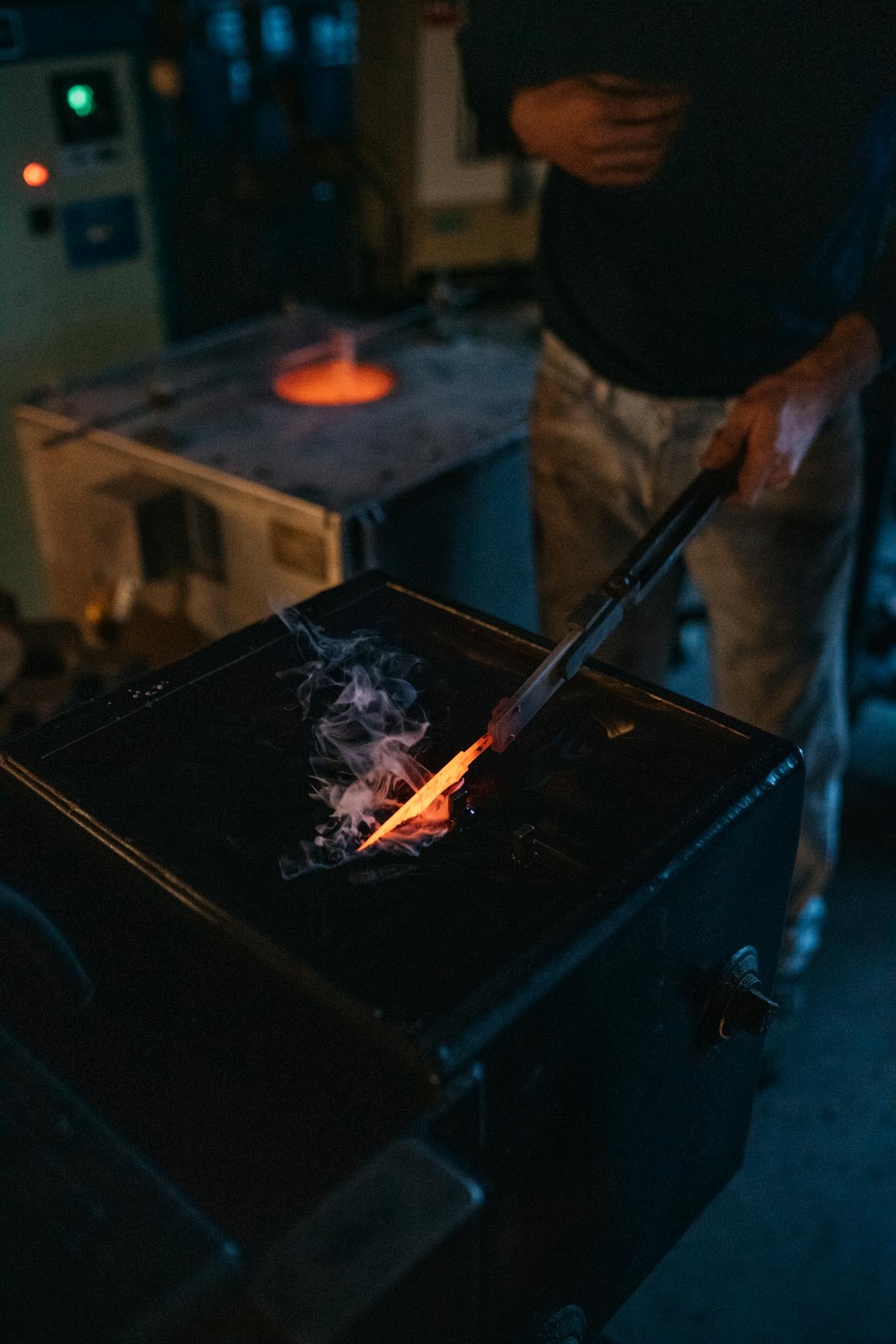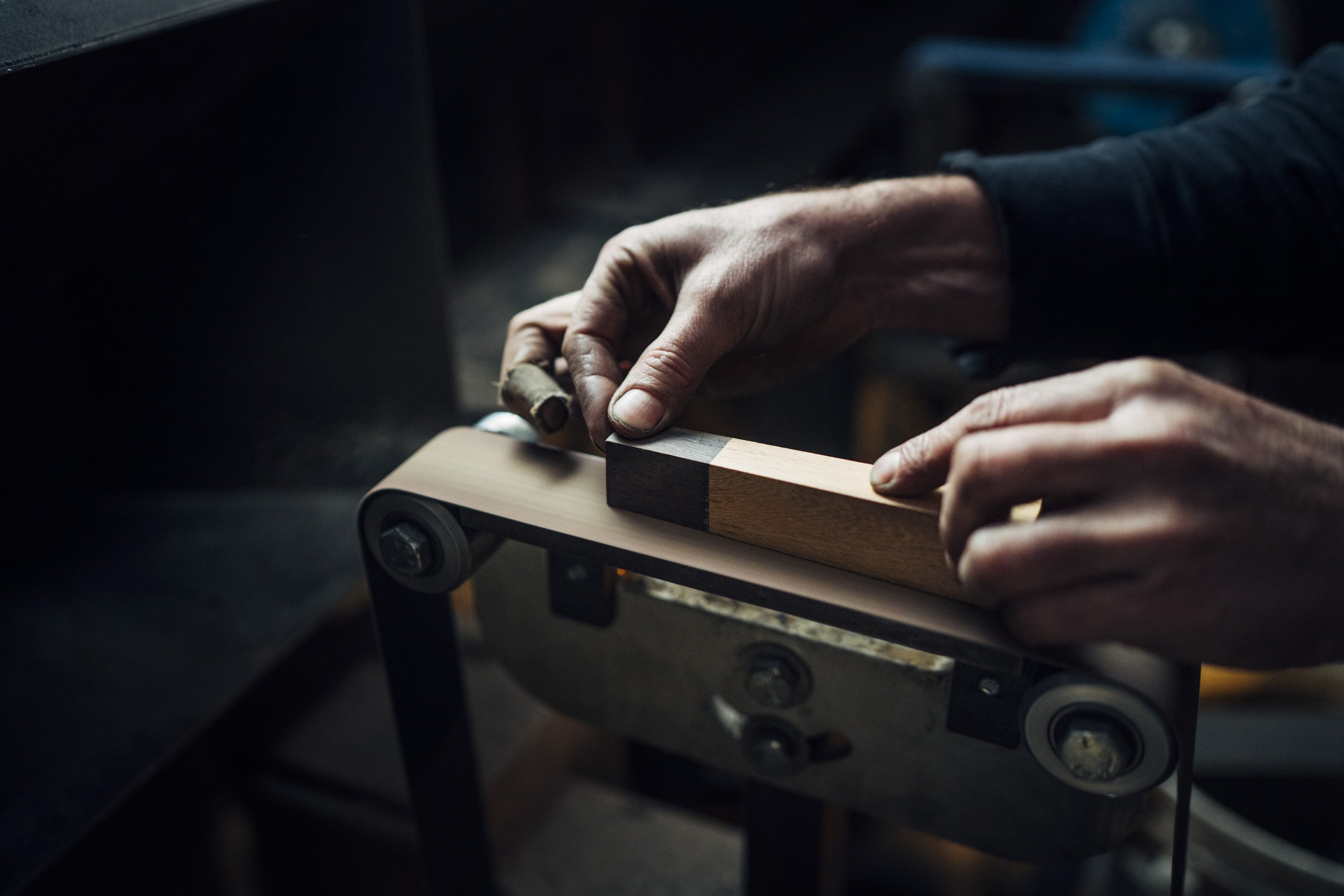Background
I began studying metalwork at age twelve with internationally recognized artist blacksmith, Tom Joyce. By the time I graduated from high school, blacksmithing had become a calling to which I wished to dedicate my life. After studying ornamental ironwork with Joyce and others, I traveled to Japan as a journeyman. While visiting blacksmiths throughout the country I was fortunate to meet one of Japan's master knife-makers, Hiroshi Ashi, who kindly hosted me for the next two years.Thanks to his patronage I studied and practiced with many artisans in the city of Sakai, renown for its cutlery and bladesmithing.
I returned to Santa Fe in 2009 determined to build my own shop and make knives based on the techniques and philosophy that I learned from the craftsman of Japan. The first step was to import the key pieces of equipment. To fund this effort, I took on decorative ironworking commissions and completed a wide range of forged and fabricated projects over the following years.
By 2012 I had acquired or built the principle tools needed and began my own knife making practice in ernest. I began by designing versions of two classic Japanese kitchen knives: Kurouchi and Sanmai blades. For the next eight years I operated very much like the Japanese shops where I trained, producing high volumes of these knives while gradually refining the design and process.
I am proud of this work and feel that it has given me a foundation in the skills and operations of knife making that is invaluable. But the same repetition that hones one’s skills can become exhausting to one’s creative spirit. And after almost a decade, it is time for a change.
At present, I am taking a break from maintaining an inventory and hope to use this time to experiment and develop ideas that have been relegated to the back-burner for too long. If you are curious what I am up to, please check out my blog.
Process
Pine charcoal is made and cut into pieces for use in the forge
The blade is forged out under the Japanese belt hammer
Each knife style is slightly different and many steps have been omitted but here is an overview of my process for making a knife.
Steel is heated in the forge using a mixture of pine charcoal and coke
The tang is forged under the air hammer
The as-forged blades are annealed in an electric kiln to make them soft and then the desired profile is traced onto the blade
Each one is then carefully flattened and straightened
To harden the blades they are heated in a fluidized sand bed and then cooled rapidly
The rough grinding is done on two water cooled grinding stones from Japan
Handles are first roughed out and glued up
The hot tang is burned into the handle
In the annealed condition the blades can be shear cut by hand
The flattening process is critical to making a good knife and happens two or three (or more) times at various stages, as needed
Cooling (quenching) is done in water or circulated oil depending on the steel
The grind is then refined on numerous belts and platens
The handles are shaped and faceted on belts
The knife tang is heated
Finally, the blade is sharpened on whetstones to hone the finished edge























